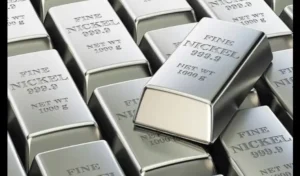Characteristics of Zinc
Versatility and Corrosion Resistance
Zinc, the fourth most widely used metal globally, offers corrosion resistance, extending the lifespan of various structures like buildings, vehicles, ships, and steel goods. It appears bluish-white and develops a white coating upon exposure to the atmosphere. Additionally, zinc plays essential roles in human growth, taste, and sperm development, though excessive exposure can lead to health issues.
Diverse Applications
Zinc finds application in alloys, electroplating, batteries, rubber, paint, and even as a fungicide, herbicide, and rodenticide. Its use spans across industries such as electric services, petroleum refining, manufacturing, and chemicals.
Domestic Scenario
The Indian zinc industry, privatized in 2002, is undergoing expansion, aiming for self-sufficiency by 2010 and subsequently becoming a significant global supplier. Buoyed by steel industry growth, zinc demand is expected to rise by 12-15% annually, with galvanizing being a primary application.
Global Perspective
Substitutes and Competitors
Aluminum, steel, and plastics are substitutes for galvanized sheet, while aluminum, plastics, and magnesium compete as diecasting materials. Various elements substitute for zinc in chemical, electronic, and pigment uses, impacting its market dynamics.
Factors Influencing Zinc Industry
Market Dynamics
Factors such as changes in inventory levels, economic growth rates, and global demand in consuming industries, alongside alternative metal prices and fund participation, shape the zinc industry’s trajectory.
Global Exchanges
The London Metal Exchange (LME) plays a significant role, with price cues from other major global exchanges influencing market trends.
World Nickel Markets
The LME serves as a key platform for trading, reflecting global nickel market dynamics.
Conclusion
Zinc’s versatile properties and wide-ranging applications make it a crucial metal in various industries. Understanding its characteristics and the factors influencing its market dynamics is essential for stakeholders in the zinc industry.
IST of Global Exchanges (Price Clues from Other Major Global Exchanges): LME: 5.30 PM to 10.30 PM.


















+ There are no comments
Add yours